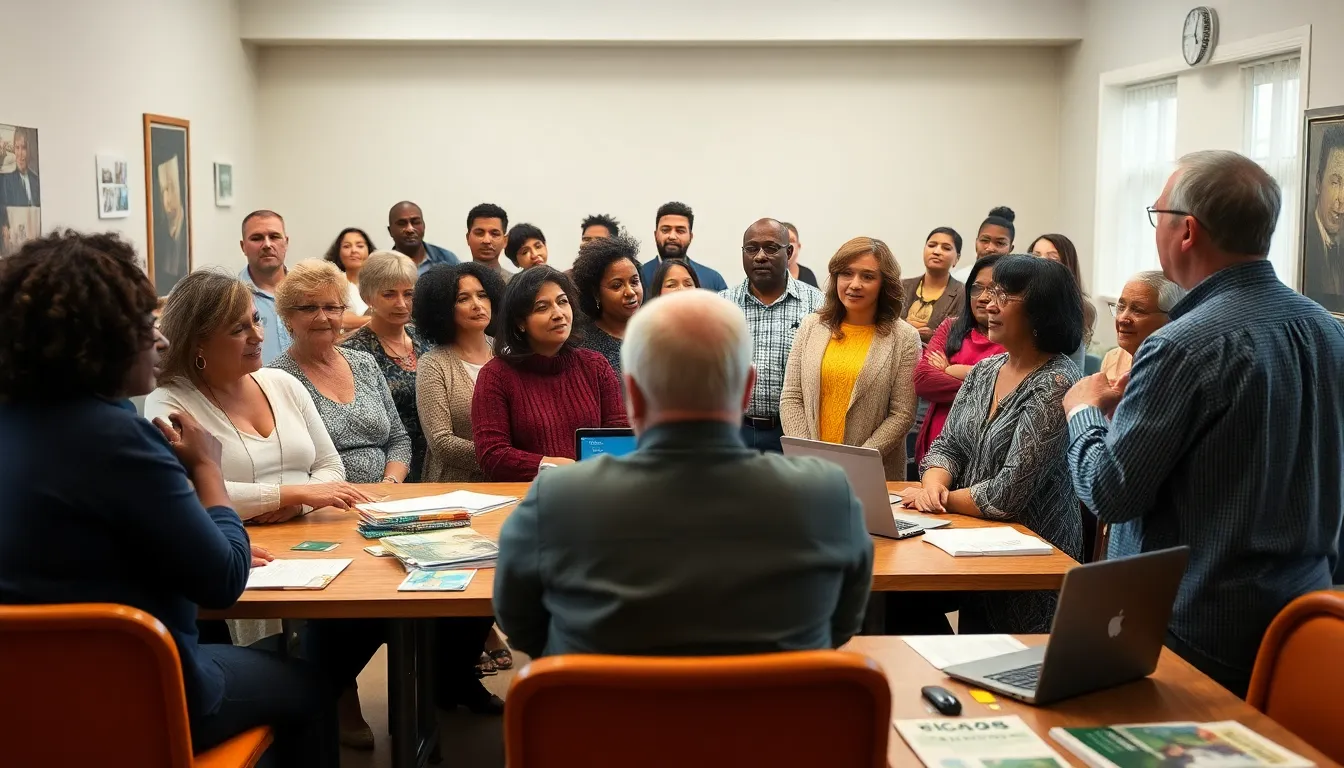Debt can feel like a relentless monster lurking under the bed, ready to pounce at any moment. For many, it’s not just a financial burden; it’s a source of sleepless nights and endless stress. Fortunately, there’s a light at the end of the tunnel, and it’s not just the glow of a credit card bill. With the right debt-crisis solutions, individuals can turn their financial nightmares into manageable dreams.
Table of Contents
ToggleUnderstanding Debt Crises
Debt crises occur when borrowers cannot meet financial obligations. They involve significant challenges that impact individuals and economies alike.
Definition of Debt Crisis
A debt crisis arises when debt levels exceed manageable limits. It often leads to default scenarios, where individuals or nations fail to meet repayment schedules. Defaults can trigger a domino effect, affecting financial systems and overall economic stability. Borrowers experiencing these crises often face emotional distress and financial uncertainty, highlighting the severity of the situation.
Causes of Debt Crises
Multiple factors contribute to debt crises. Poor financial management frequently ranks among the top causes, resulting in unsustainable borrowing patterns. Economic downturns also play a critical role, disrupting income streams and increasing defaults. Additionally, sudden spikes in interest rates may overwhelm borrowers, making debt repayment unattainable. Other factors include unexpected expenses and lack of financial literacy, which further complicate the ability to manage debt effectively.
Overview of Debt-Crisis Solutions

Debt crises require immediate and effective strategies to regain financial stability. Several solutions cater to both short-term and long-term needs.
Short-Term Solutions
Addressing immediate financial concerns often involves practical steps. Negotiating with creditors can lead to manageable payment plans. Utilizing personal loans from friends or family also provides temporary relief, often with lower interest rates. Exploring government assistance programs offers additional resources that help cover basic needs during difficult times. Finally, credit counseling services can provide expert guidance, helping individuals navigate their current situations and establish a path forward.
Long-Term Solutions
Building a sustainable financial future necessitates thorough planning and education. Establishing a budget assists in tracking income and expenses, fostering better financial discipline. Implementing debt consolidation combines multiple debts into a single payment, reducing interest rates and simplifying monthly obligations. Enhancing financial literacy equips individuals with the knowledge to make informed decisions, preventing future crises. Creating an emergency fund ensures that unexpected expenses do not derail progress toward financial stability.
Government Interventions
Government interventions play a crucial role during debt crises, providing support to stabilize both individual borrowers and the broader economy.
Fiscal Policies
Fiscal policies involve government spending and tax adjustments aimed at boosting economic growth. Increased government spending on infrastructure, education, and healthcare creates jobs and stimulates consumer spending. Tax cuts can alleviate financial burdens for individuals, enhancing disposable income and encouraging expenditure. Additionally, targeted fiscal initiatives may include debt relief programs for distressed borrowers. These measures can mitigate defaults and foster economic resilience.
Monetary Policies
Monetary policies regulate the money supply and influence interest rates to manage economic stability. Lowering interest rates reduces borrowing costs, allowing individuals to repay existing debts more easily. Additionally, central banks may implement quantitative easing to inject liquidity into the economy. This process encourages lending and investment, combating the adverse effects of debt crises. Furthermore, maintaining stable inflation assists borrowers by ensuring that debt obligations do not become disproportionately burdensome.
Role of Financial Institutions
Financial institutions play a pivotal role in addressing debt crises by providing essential services and solutions to affected individuals. They contribute significantly through various avenues like debt restructuring and loan forgiveness programs.
Debt Restructuring
Debt restructuring involves modifying the terms of existing debt to make it more manageable for borrowers. Financial institutions often offer this option when borrowers face financial difficulties. Institutions may adjust payment schedules or reduce interest rates, which eases the borrower’s financial burden. This process can prevent defaults, benefitting both borrowers and lenders. Effective restructuring enhances stability within the economy while fostering a more supportive financial environment. Each institution tailors its approach based on individual circumstances, promoting sustainable debt management strategies.
Loan Forgiveness Programs
Loan forgiveness programs are designed to alleviate the debt burden for specific groups of borrowers. Many financial institutions participate in these initiatives, particularly for federal student loans and other types of qualifying debt. Eligibility often depends on employment in public service sectors or making consistent payments over a designated period. Such programs can significantly reduce or eliminate outstanding loans, empowering individuals to rebuild their financial lives. Institutions prioritize these programs to promote economic recovery and improve long-term financial health. By offering loan forgiveness, financial institutions help create pathways toward economic stability.
Community and Individual Actions
Debt crises often require proactive measures from both communities and individuals. Taking steps toward financial stability can significantly reduce stress and anxiety related to overwhelming debt.
Financial Literacy Programs
Effective financial literacy programs empower individuals to manage their money wisely. These initiatives teach budgeting, saving, and investment strategies, leading to informed financial decisions. Accessible workshops and online resources reach varied audiences, increasing awareness of debt management. With knowledge, individuals can better handle unexpected expenses and avoid falling into debt traps. Schools and community organizations frequently promote these programs, underscoring the importance of financial education for all ages.
Grassroots Movements
Grassroots movements play an essential role in advocating for debt relief and financial reform. Local groups raise awareness about the impacts of debt on families, pushing for policy changes that offer relief. By organizing community events and campaigns, these movements foster solidarity among individuals facing similar challenges. Together, they provide resources, such as financial counseling and support networks. Collective action helps bring attention to issues like predatory lending practices and encourages legislative changes that benefit affected individuals.
Addressing debt crises requires a multifaceted approach that combines individual actions with systemic support. By embracing both short-term and long-term solutions individuals can regain control over their financial situations. Financial literacy plays a crucial role in equipping people with the knowledge to make informed decisions and avoid future pitfalls.
Moreover government and financial institutions must continue to provide essential resources and support to foster economic stability. Community efforts can amplify these solutions by promoting awareness and advocating for necessary reforms. Together these strategies can pave the way for a more resilient financial future for those affected by debt crises.




